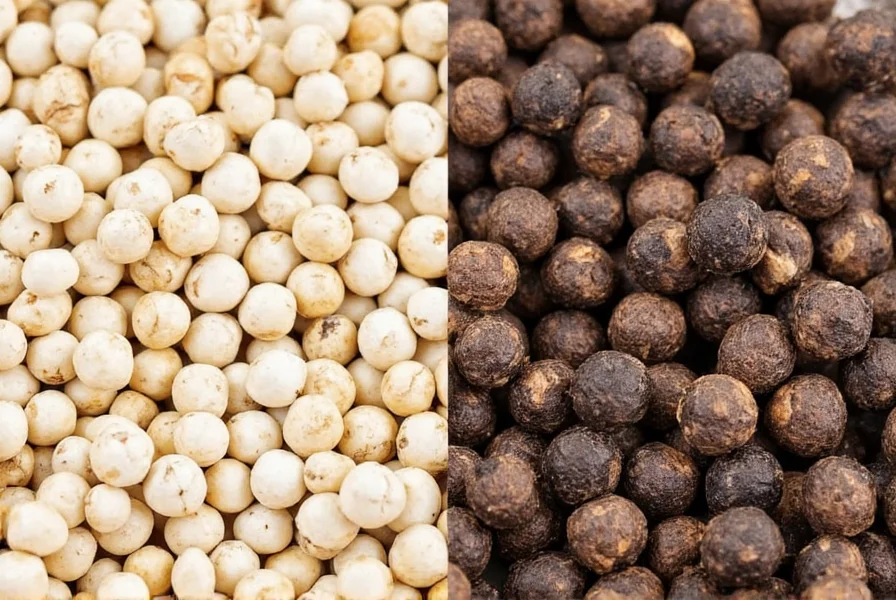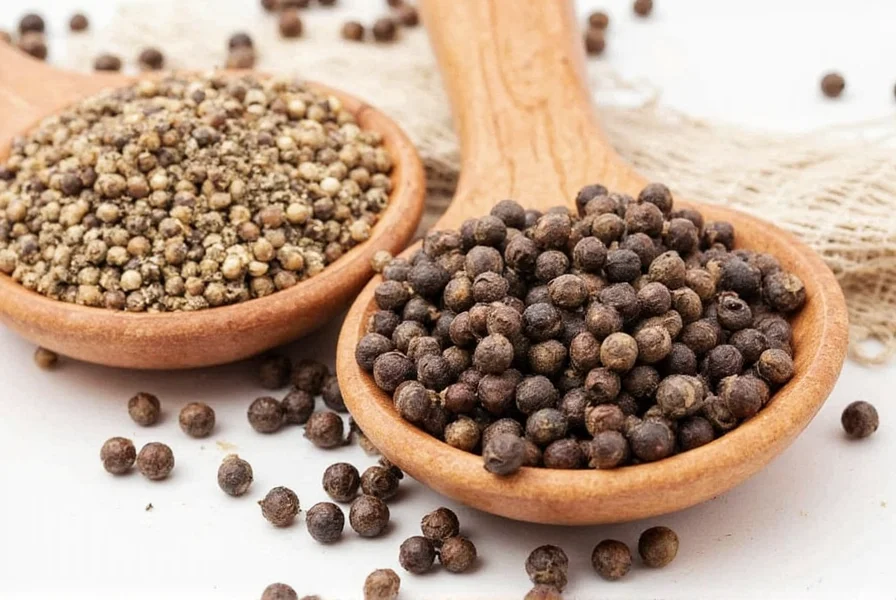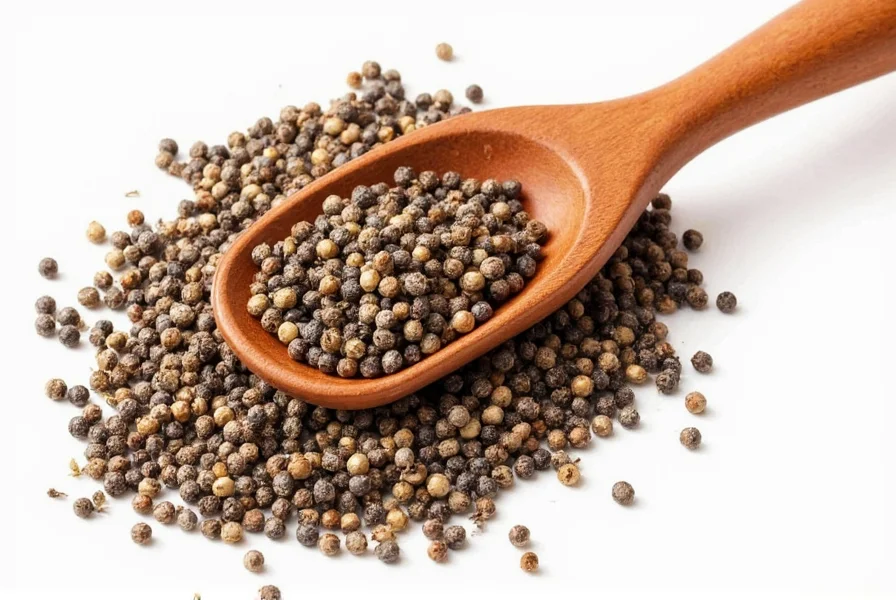Understanding the difference between white and black pepper begins with recognizing they originate from the same flowering vine. The critical distinction lies in harvest timing and processing methods, which dramatically affect their flavor, appearance, and culinary uses.
Botanical Origins and Harvesting Process
Both varieties come from Piper nigrum, a perennial climbing vine native to South India. The harvesting process determines whether peppercorns become black or white:
- Black pepper: Harvested when berries are nearly ripe but still green. They're sun-dried with outer layers intact, causing enzymatic browning that creates the dark color
- White pepper: Allowed to fully ripen on the vine, then soaked in water for 7-10 days to ferment and remove the outer fruit layer before drying
This processing difference explains why white pepper lacks the pungent outer layer that gives black pepper its characteristic heat. The outer layer contains most of piperine, the compound responsible for pepper's spiciness.
Flavor Profile Comparison
| Characteristic | Black Pepper | White Pepper |
|---|---|---|
| Flavor intensity | Strong, pungent, complex | Milder, earthier, less complex |
| Heat level | Higher (more piperine) | Lower (less piperine) |
| Aroma | Woody, floral notes | Earthy, musty notes |
| Aftertaste | Sharp, lingering heat | Subtle, shorter finish |
Professional chefs note that black pepper delivers a more complex flavor profile with floral and woody notes, while white pepper offers a cleaner heat that doesn't visually disrupt light-colored dishes. The culinary differences between white and black pepper make them suitable for different applications.
Culinary Applications and When to Use Each
Understanding when to use white versus black pepper significantly impacts dish quality:
- Black pepper excels in:
- Meat rubs and marinades
- Dark sauces and gravies
- Roasted vegetables
- Most savory applications where visual appearance isn't critical
- White pepper shines in:
- Cream sauces and soups
- Light-colored dishes like mashed potatoes
- Asian cuisine (particularly Chinese and Vietnamese)
- Salt-and-pepper seasoning combinations
Many professional kitchens maintain both varieties because they serve distinct purposes. The when to use white pepper instead of black pepper decision often comes down to visual presentation and desired flavor profile.

Nutritional Differences and Health Benefits
While both contain piperine (responsible for many health benefits), there are subtle nutritional variations:
- Black pepper contains slightly higher levels of piperine (5-9%) compared to white pepper (4-7%)
- Black pepper retains more antioxidants from the outer fruit layer
- White pepper may be easier to digest for some people with sensitivities
- Both enhance nutrient absorption, particularly of turmeric's curcumin
The black pepper vs white pepper nutritional value difference is minor for most culinary purposes, but black pepper generally offers slightly more health benefits due to its higher piperine content.
Storage and Shelf Life Considerations
Proper storage affects both varieties' longevity:
- Store both in airtight containers away from light and heat
- Whole peppercorns maintain freshness significantly longer than pre-ground versions
- Black pepper typically lasts 2-3 years when properly stored
- White pepper has a slightly shorter shelf life (1-2 years) due to its processing
- Grind pepper fresh whenever possible for maximum flavor
Many home cooks don't realize that pre-ground pepper loses potency rapidly. Investing in a quality pepper mill makes a noticeable difference in flavor intensity for both varieties.
Common Misconceptions Addressed
Several myths persist about these pepper varieties:
- Myth: White pepper is just bleached black pepper
Fact: White pepper undergoes natural fermentation to remove the outer layer, not chemical bleaching - Myth: White pepper is inferior to black pepper
Fact: They serve different culinary purposes; neither is objectively better - Myth: White pepper has no flavor
Fact: It has a distinct earthy flavor profile that works better in certain dishes
Understanding these facts helps cooks make informed decisions about which pepper to use for specific recipes. The how is white pepper made from black peppercorns process involves natural fermentation, not artificial treatment.
Practical Substitution Guidance
When substituting one for the other, consider these guidelines:
- Replace 1 teaspoon black pepper with ¾ teaspoon white pepper (white is milder)
- For visual dishes, white pepper works better in light-colored preparations
- For maximum flavor impact, black pepper generally provides more complexity
- In spice blends, black pepper usually delivers better overall flavor
The substituting white pepper for black pepper in recipes requires adjustment since their flavor intensities differ significantly. Always taste as you adjust quantities.

Final Considerations for Home Cooks
Building a well-equipped spice collection means understanding these differences. Quality matters more than variety—invest in fresh, whole peppercorns from reputable sources. The price difference between white and black pepper typically reflects production costs, with white pepper often being slightly more expensive due to its more labor-intensive processing.
Whether you're exploring the health benefits of black pepper compared to white pepper or simply want to improve your cooking, recognizing these distinctions helps you make better culinary decisions. Neither variety is superior—each has specific applications where it shines.











 浙公网安备
33010002000092号
浙公网安备
33010002000092号 浙B2-20120091-4
浙B2-20120091-4